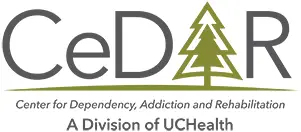SOCIOLOGY AND PUBLIC HEALTH
On August 26th, 2019 the State of Oklahoma won a settlement against industry giant Johnson & Johnson to the amount of $572 million. The reason for this suit – “a false, misleading, and deceptive marketing campaign designed to convince Oklahoma doctors, patients, and the public at large that opioids were safe and effective for the long-term treatment of chronic, non-malignant pain” as quoted by Oklahoma District Judge Thad Balkman.[1]
The State sought damages and compensation for the pharmaceutical industry’s role in the opioid epidemic. The one costing hundreds of lives in America each day to overdose.
Multiplying Lawsuits
This lawsuit is a second large blow to opioid manufacturers in recent years. Purdue Pharma, the manufacturer of Oxycontin, is currently involved in complex legal suits. These also center around this topic of opioid marketing and deceptive practices.
It is unclear how many additional companies or US States will reach similar lawsuits, but for now, we will use the term Big Opioid to describe how large companies have played a role in the evolution of the opioid epidemic in America.
Big Tobacco
Such outcomes seem to echo that of Big Tobacco in 1998, specifically the Tobacco Master Settlement Agreement (MSA) between 46 States and the four largest tobacco companies at the time – Philip Morris, R.J. Reynolds, Lorillard and Brown & Williamson.[2] The combined payments from these companies reached around $120 billion over two decades, with the full expected cost to total $250 billion.
Quite similar in practice to that of recent opioid manufacturers, the tobacco industry suppressed scientific information and created a culture of confusion around tobacco products, ultimately leading to more widespread smoking. Because of direct-to-physician marketing, many prescribers encouraged patients to start using opioids for chronic pain management, under-appreciating the risk for developing an addiction.
The Truth
Fortunately, the payments from the Tobacco MSA helped to address public health needs in the space of primary prevention as well as treatment. The Truth advertising campaign, designed to educate youths about the health consequences of smoking, was born out of this settlement. National tobacco quit-lines, including that of the Colorado Quitline (1-800-QUIT-NOW), also have been funded by the MSA.
Over the upcoming years, we will be able to see how the recent opioid settlements, and potential future settlements, may translate into public health initiatives. Will the money be used both in the areas of primary prevention and treatment? What programs might impact the opioid epidemic with greatest efficacy?
Just as the financial settlement of the Tobacco MSA was able to fund some impactful public health approaches in addressing tobacco use, so can money from opioid manufacturers be used to address the opioid epidemic.
[1] Time. https://time.com/5662827/johnson-opioid-crisis-lawsuits/. Aug 28, 2019.
[2] Wikipedia. https://en.wikipedia.org/wiki/Tobacco_Master_Settlement_Agreement.
Read more CeDAR Education Articles about Sociology and Public Health
